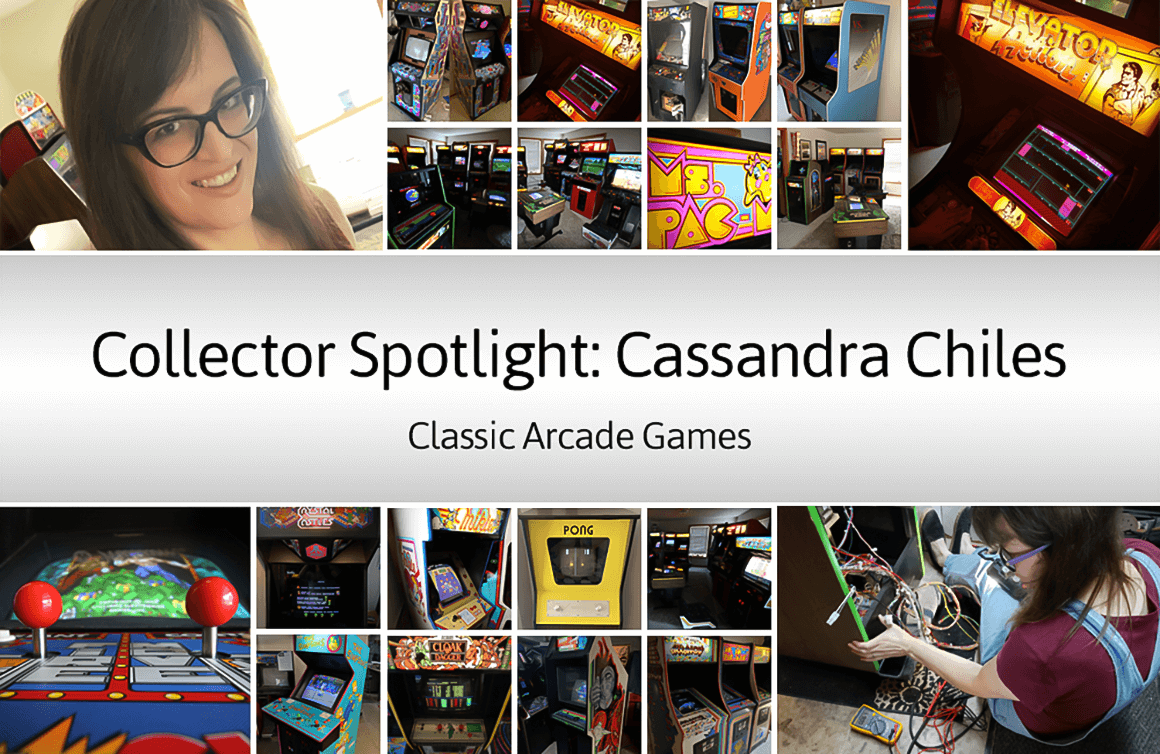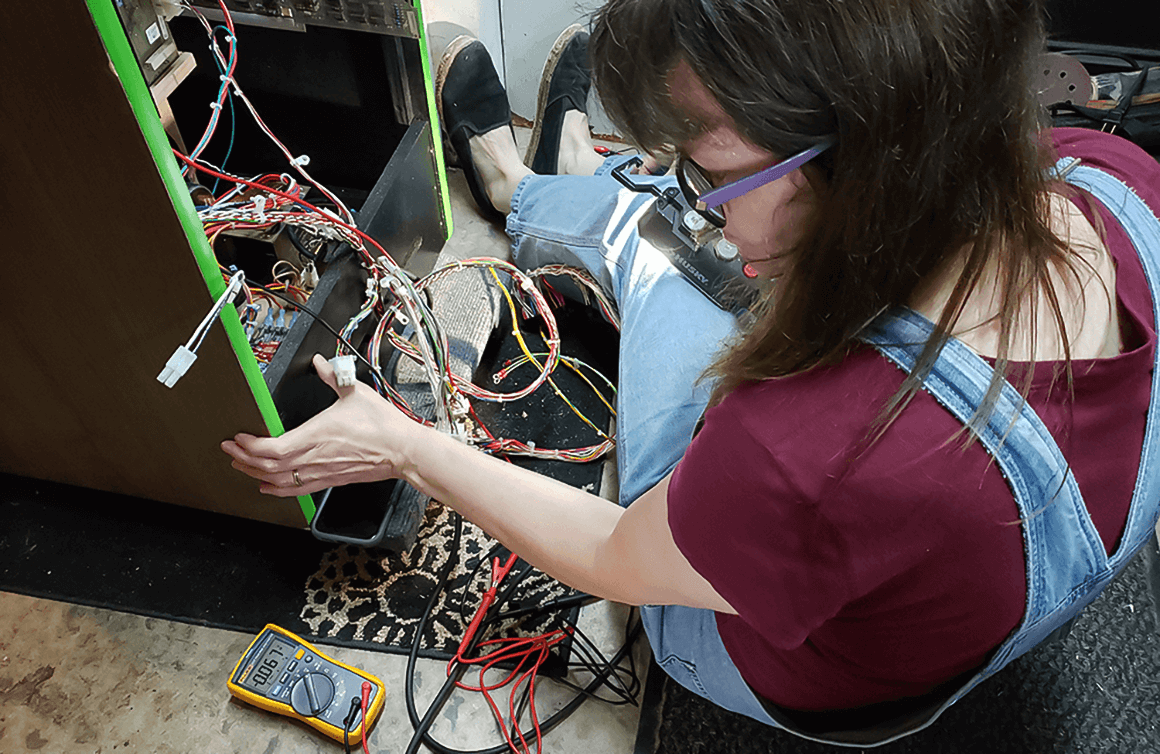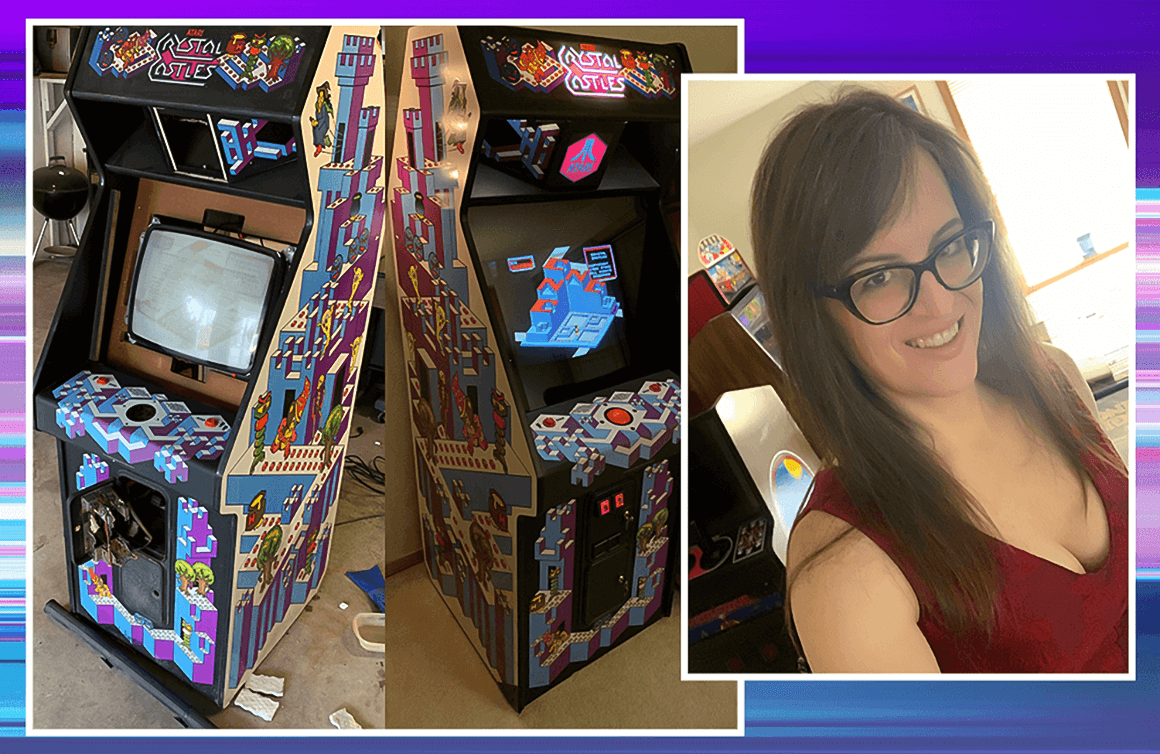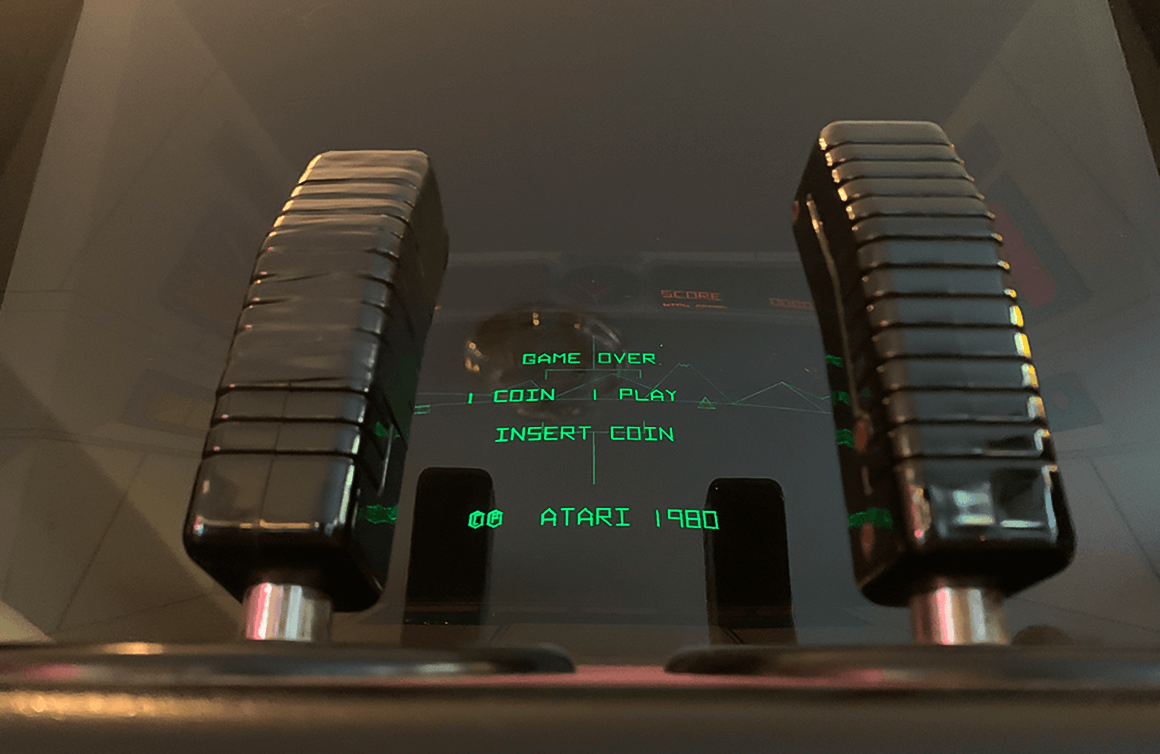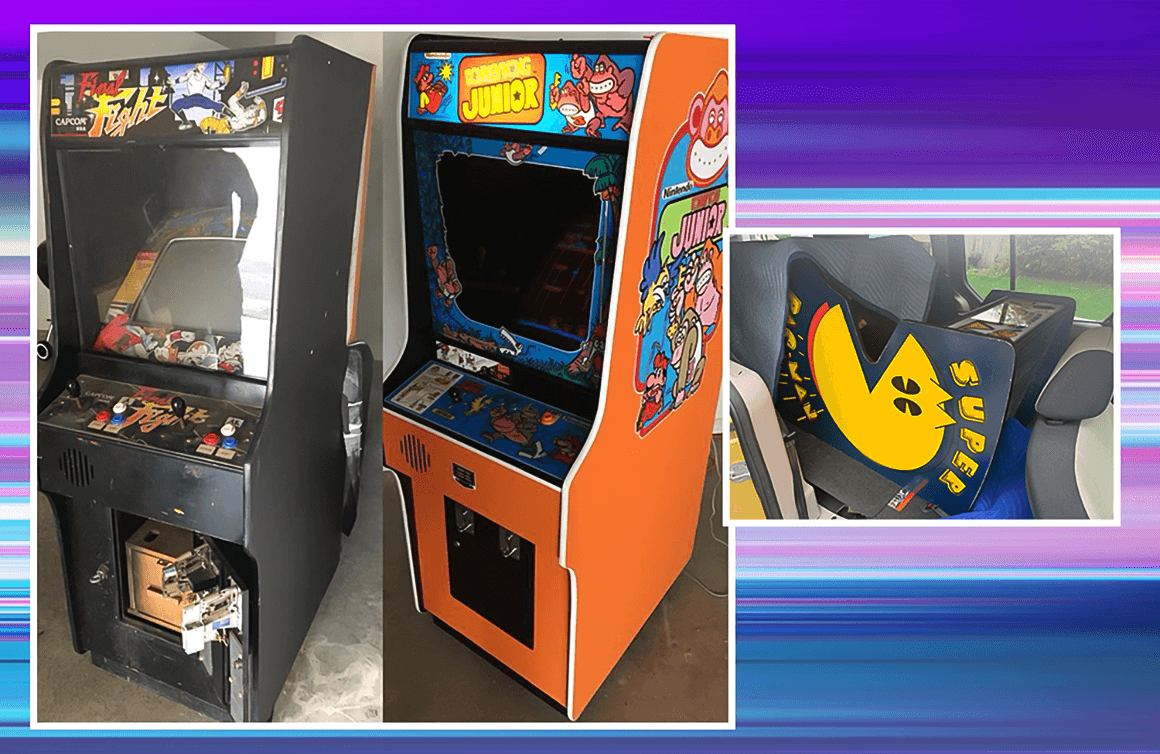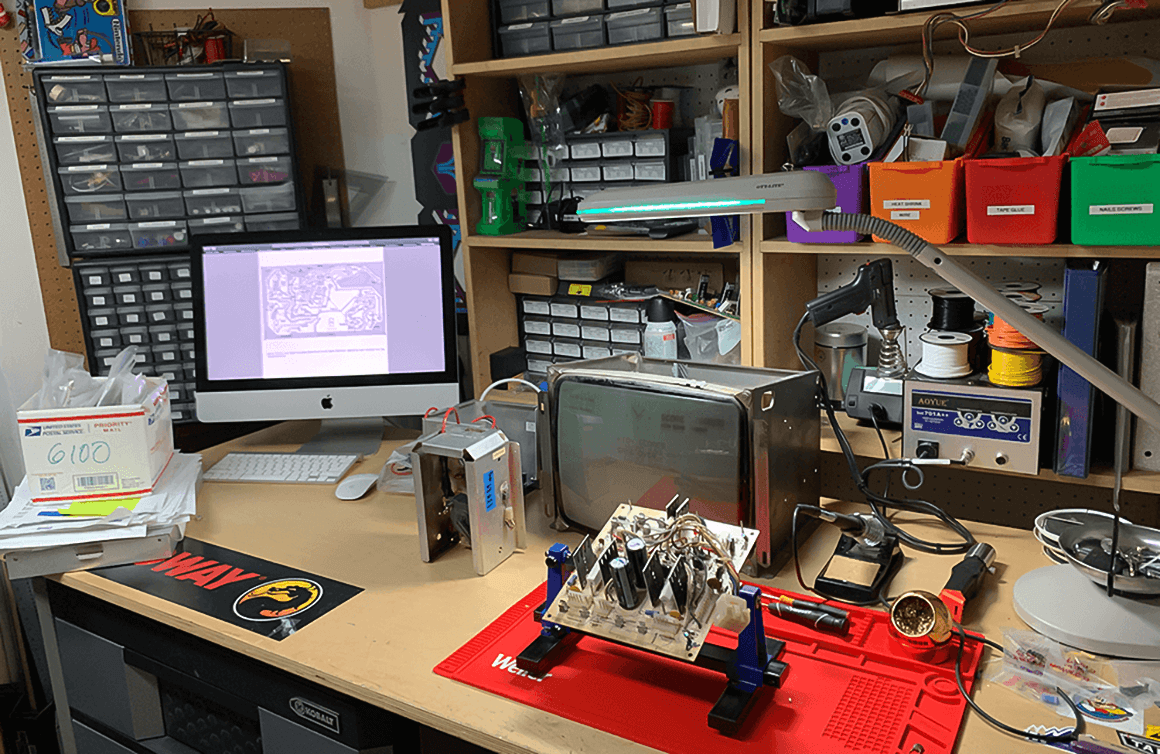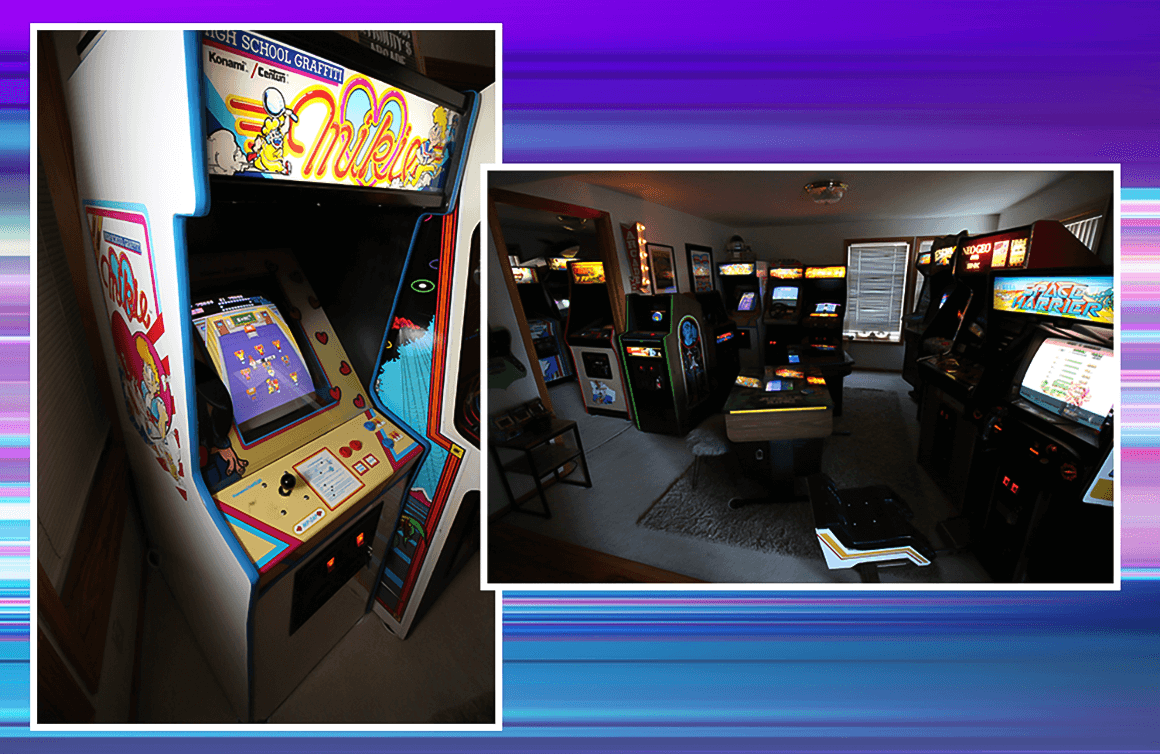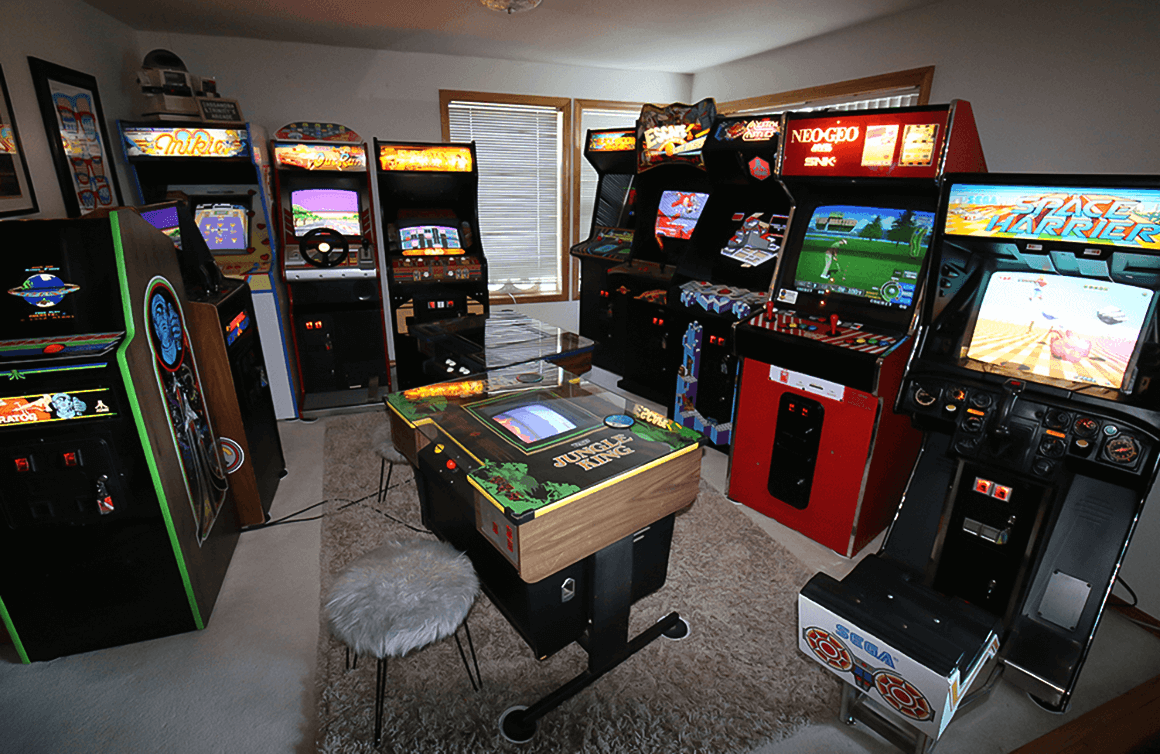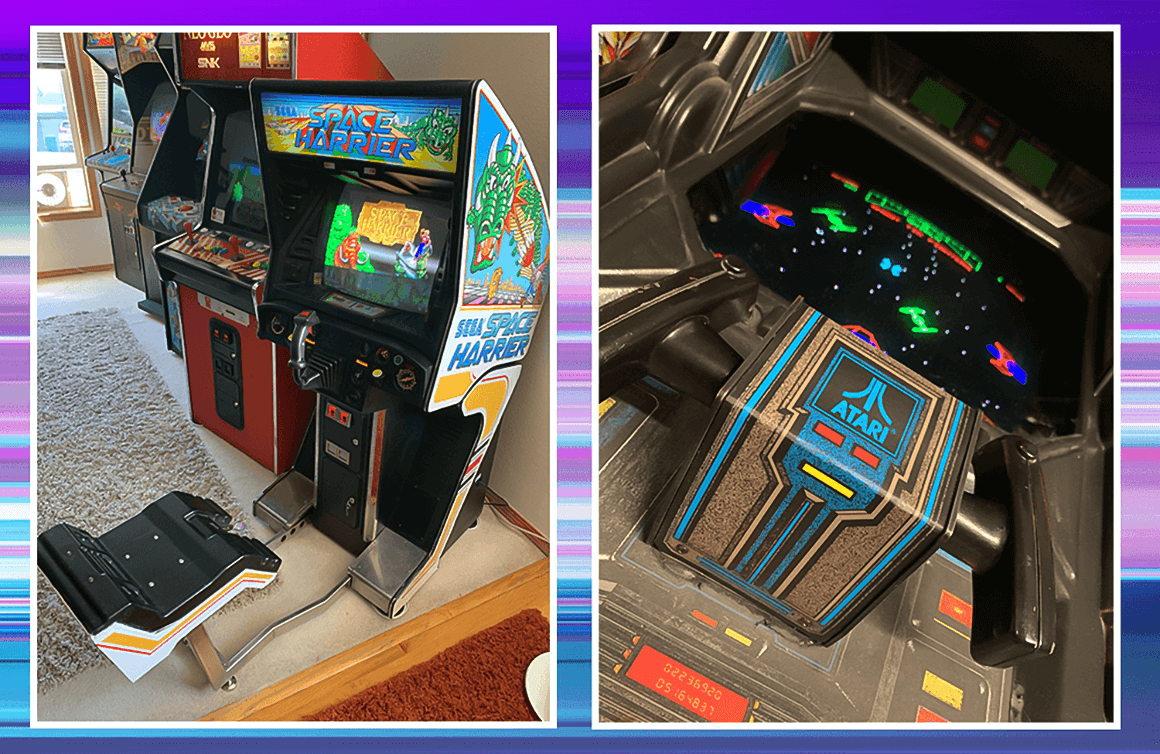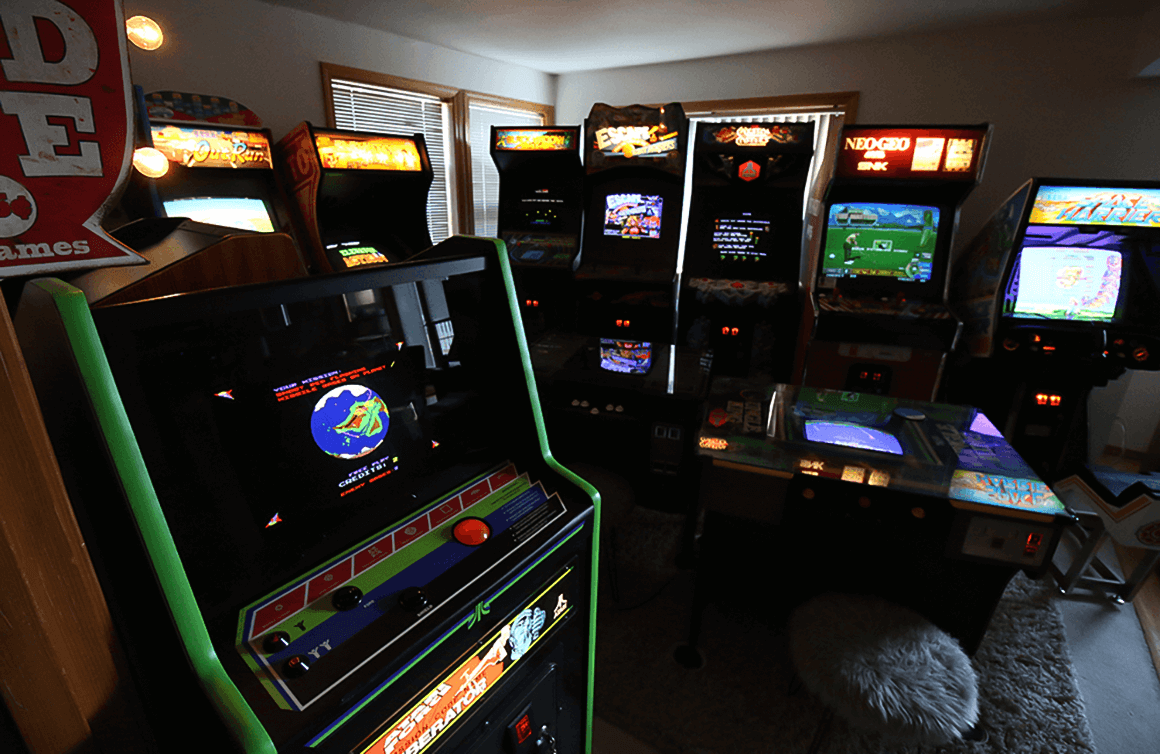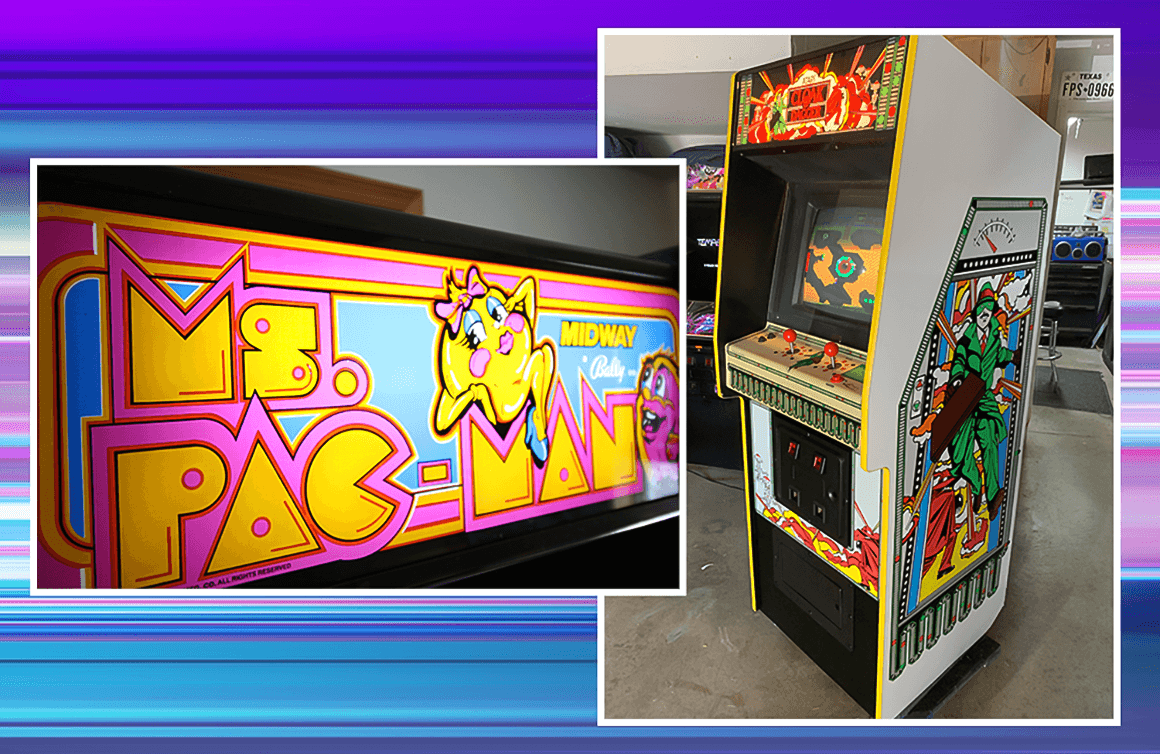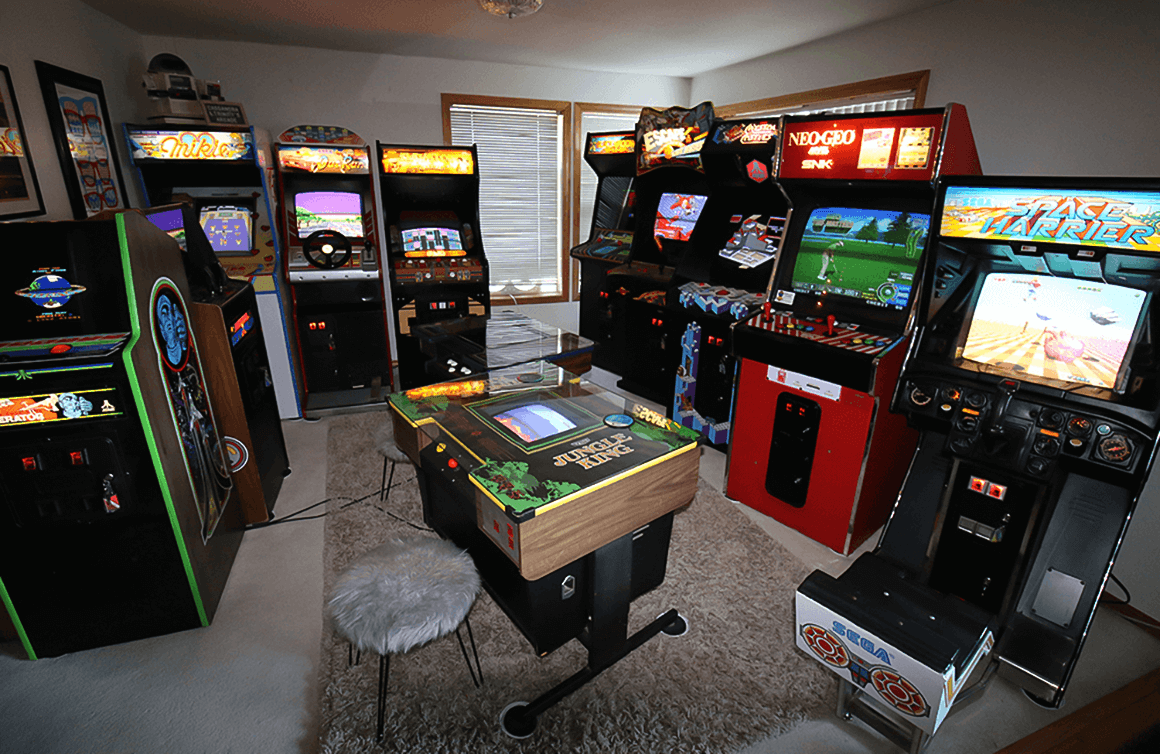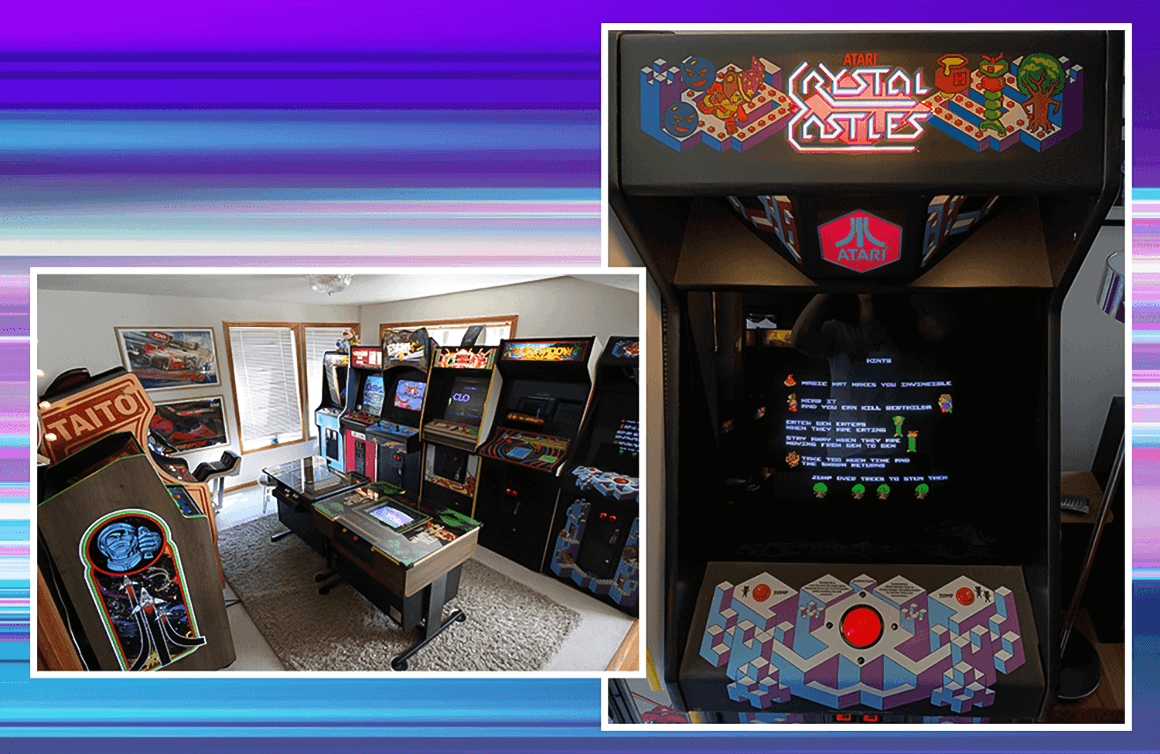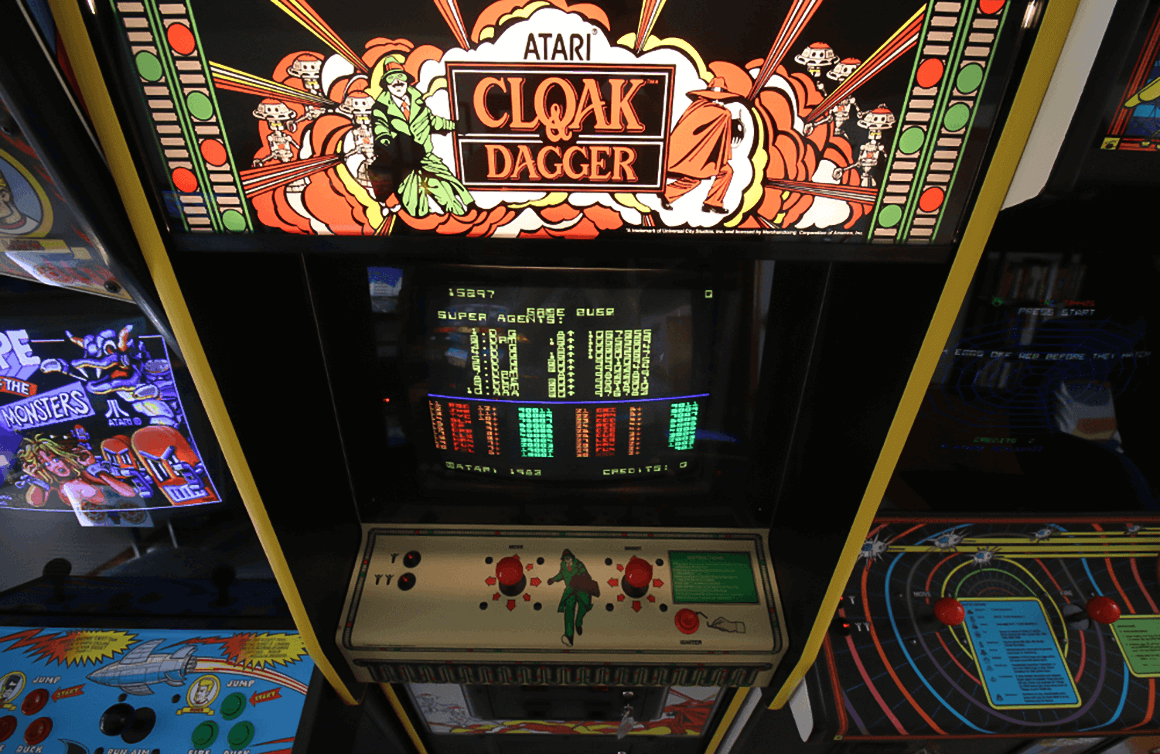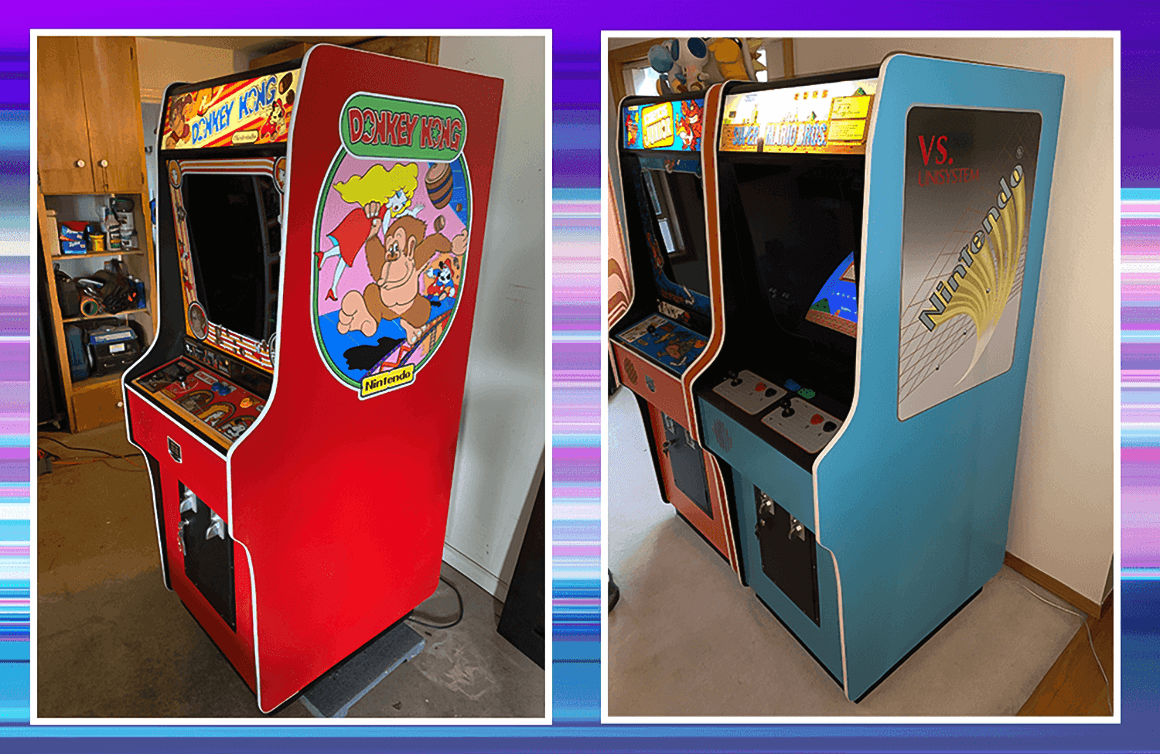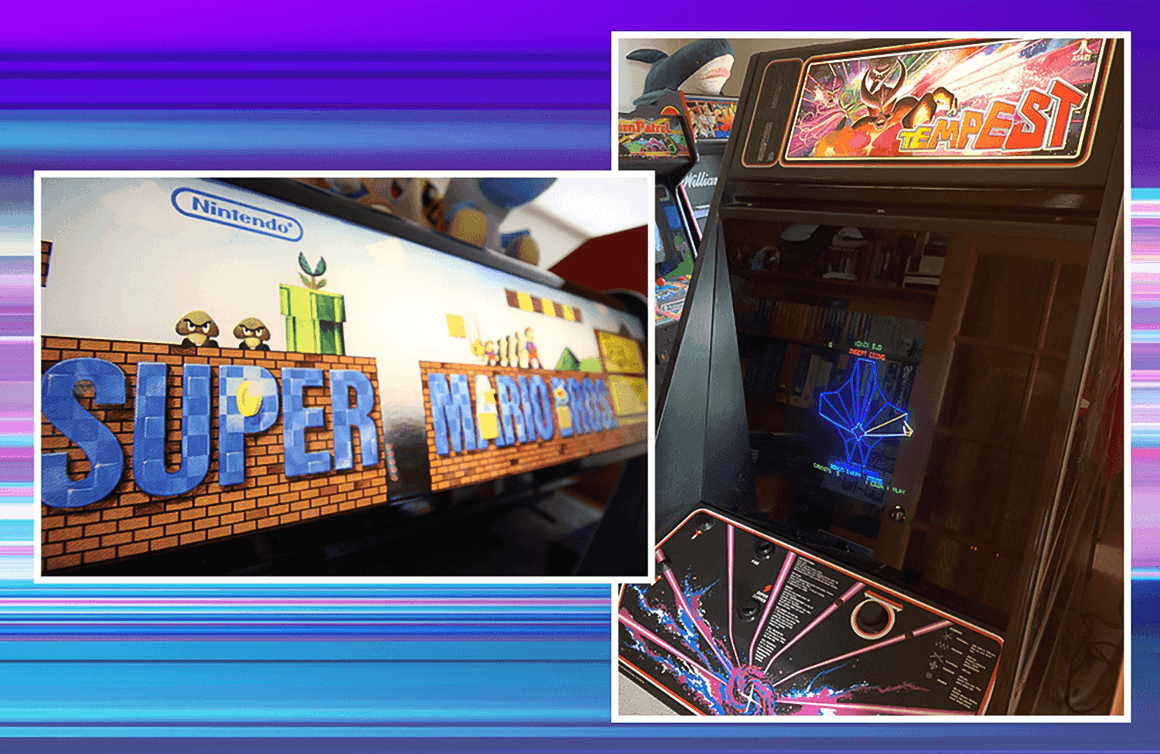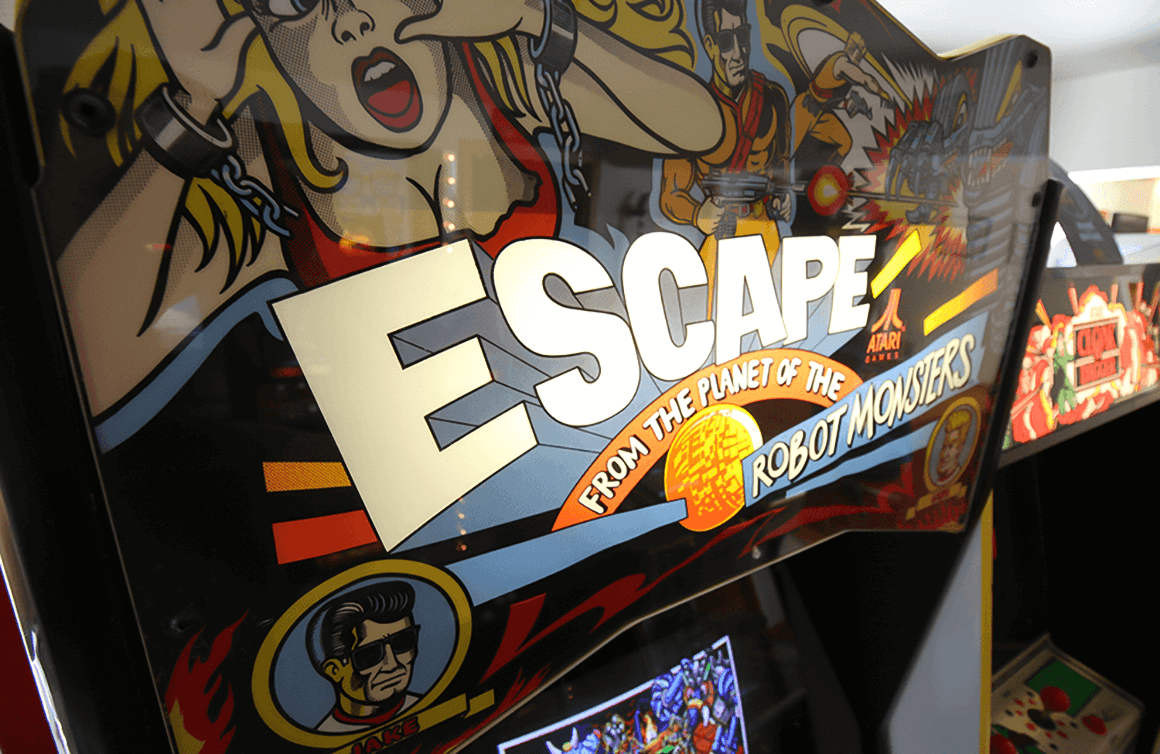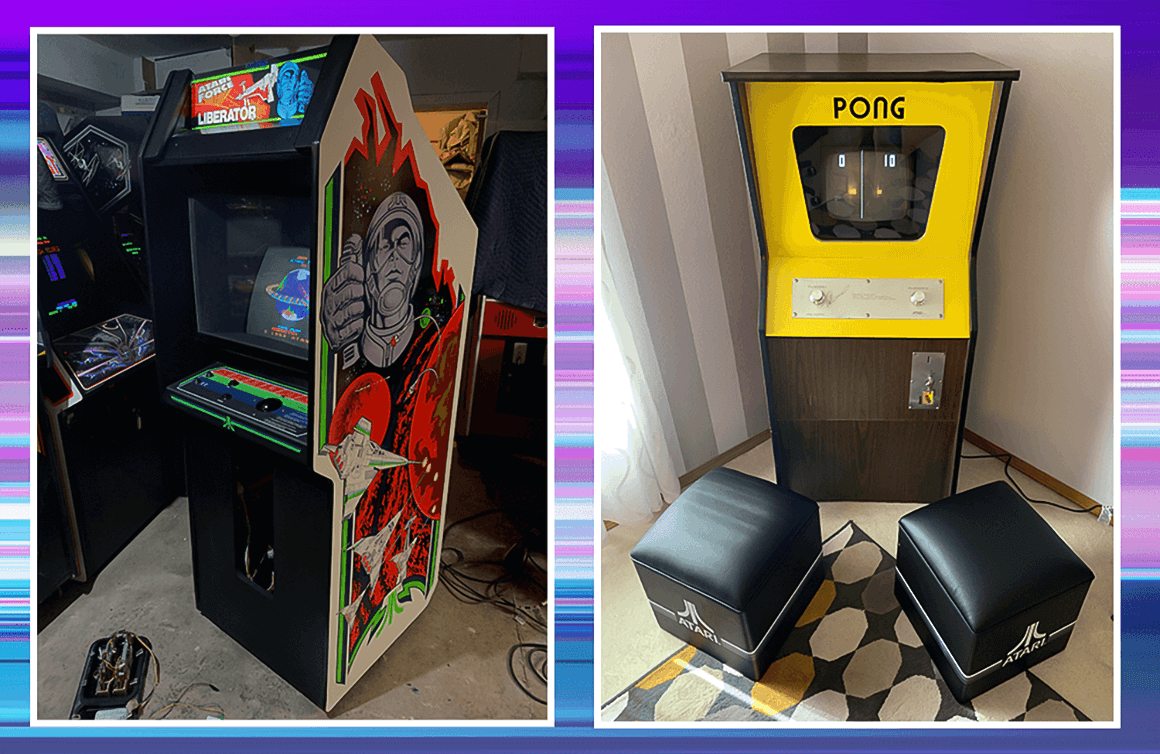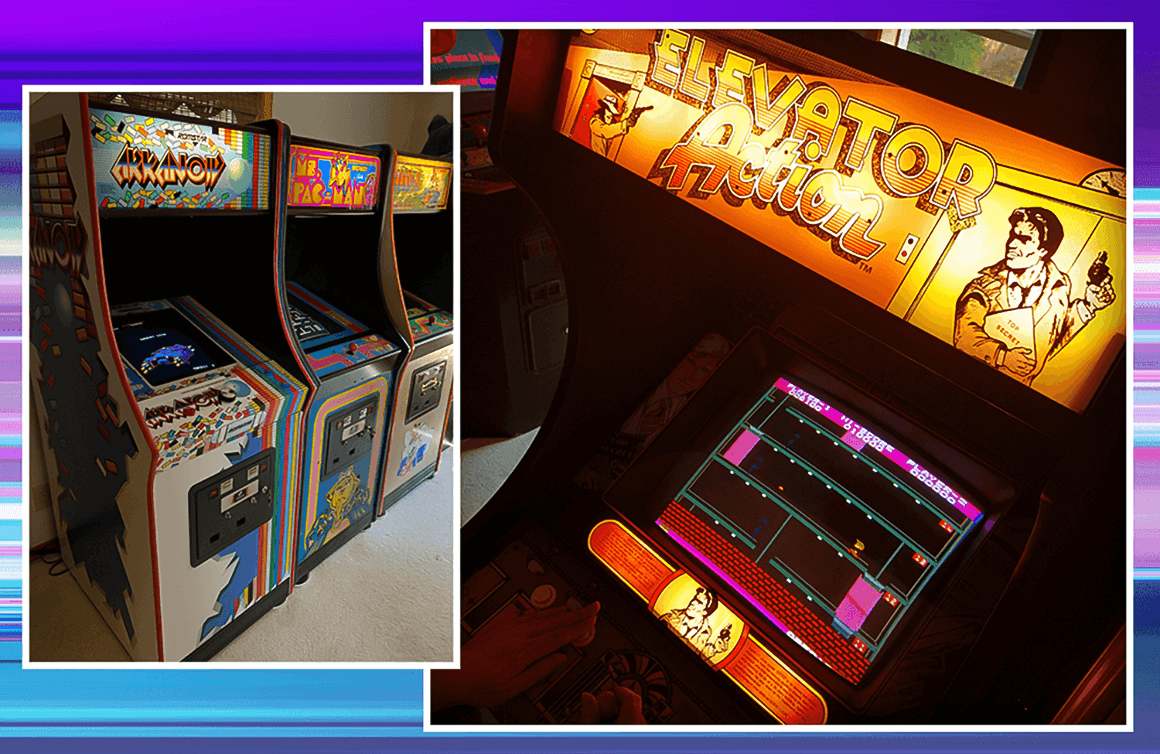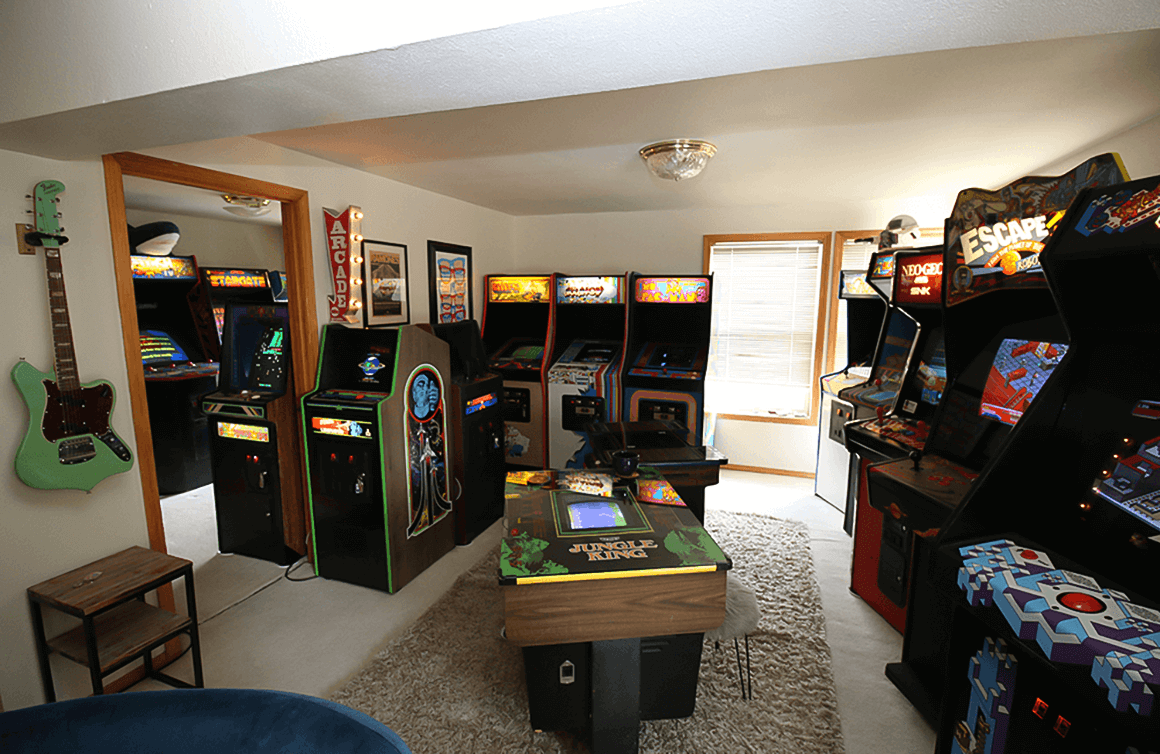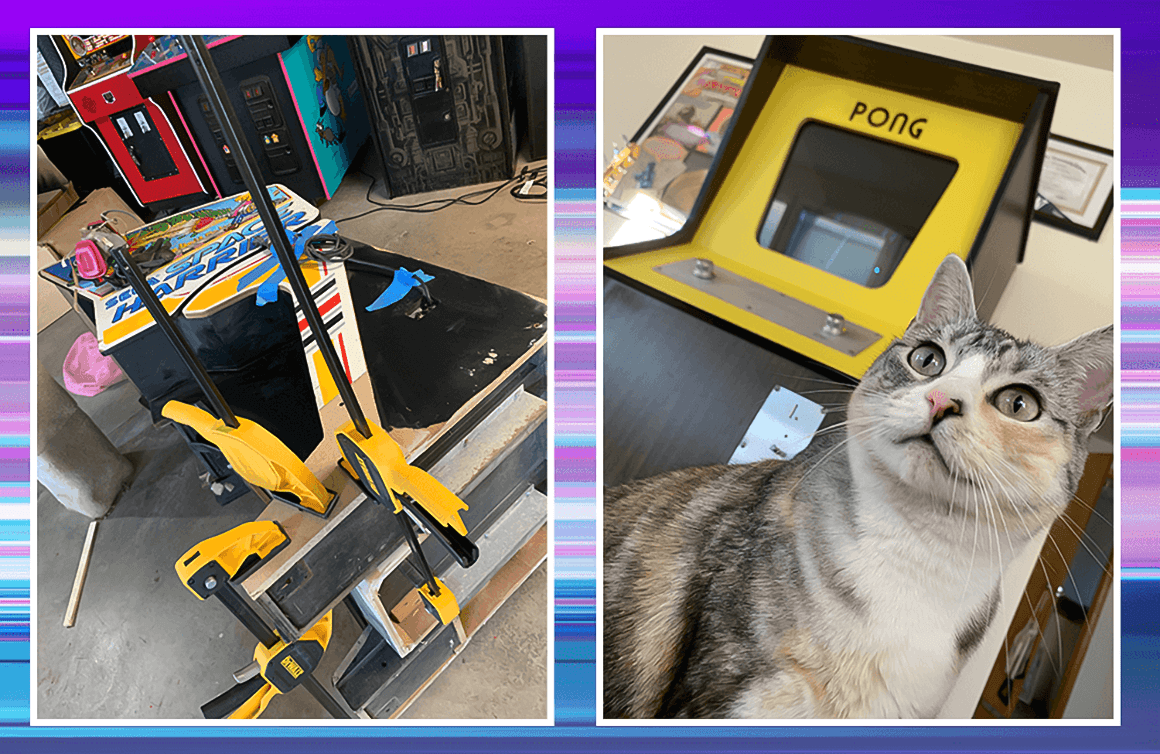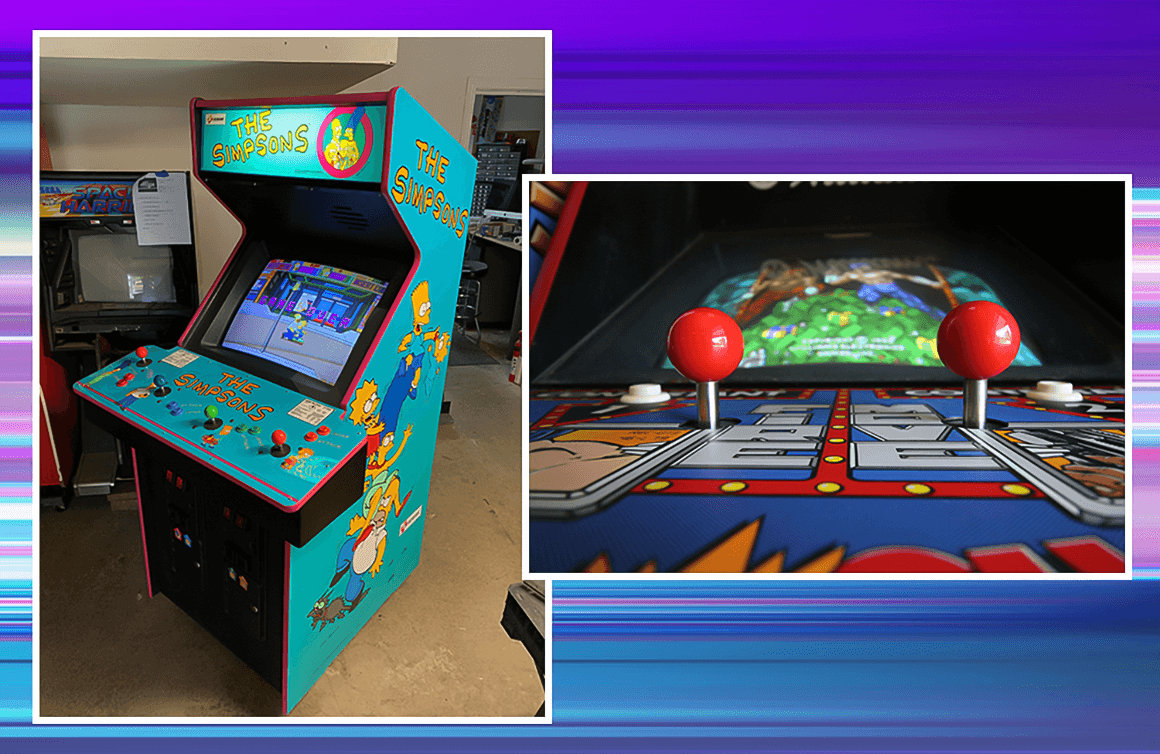How do you describe your collection?
I collect classic arcade games.
Most of the games I collect are commercial games — games that were originally designed to be coin-operated in a commercial setting — from the years 1972 to about the mid-1980s, although I do have a couple of games from the ’90s.
This era is what most people refer to as the Golden Age of arcade games — which is from 1978, when Space Invaders came out — to about when the video game crash happened in 1984. That’s really where most of my collection lies and the era where most of the games that I’m interested in sit. I’m not really interested in most things after 1992 or ’93. They’re just not that interesting to me.
I have 32 arcade games right now, which if you’re collecting stamps isn’t that many. When you’re collecting large boxes that weigh 300 pounds, it’s quite a few.
Like many collectors, I have my squirrelled-away rare pieces and parts. Usually when I buy something, it’s with the intent to restore or do something with it specifically. I try really hard not to buy just to buy if, that makes sense. A lot of collectors do that with this hobby, where they have a warehouse of 800 future projects. And it’s like, “No, you’re not, you’re never gonna do that.”
I try to limit myself, especially at this point because I have so many games already that space becomes an issue. The artist, Robert Crumb, did this great piece years ago in American Splendor about his obsession with collecting jazz records. His obsession for collecting started to take over the actual joy of collecting and he wondered why he was still collecting since he had forgotten the joy of it. I try really hard to maintain that balance and remember that I collect for enjoyment.
When and why did you start your collection?
I started collecting them in the mid-1990s. I think a lot of it harkens back to nostalgia. I was born in 1972, right when video games started entering the pop-culture lexicon.
I grew up in the Washington, DC area and we would go to Ocean City, Maryland in the summers. It’s a big beach resort community. I’m not really much of an outdoorsy person, even when I was a kid. I was like, “Nah, the beach looks dirty.” I was drawn to all the arcades. One day, I went into an arcade and they had the Centipede game for sale. As a kid in the ’80s, I didn’t have $100 to buy it. But, a light bulb went on in my head as I realized people could own arcade machines. I hadn’t really thought of that before. It became this thing in the back of my mind that maybe I’d like to have them.
The 1990s rolled around and I was out of college and, for the first time, had a little bit of disposable income. Arcade machines were relatively inexpensive to collect, you could pick them up for peanuts because the games were too old to be of interest to the operators anymore and interest had levelled off with collectors. The first one I bought cost me $50. It was a Nintendo Playchoice countertop, which now is pretty valuable, but back then they were ready to throw them away. The game wasn’t making money for the arcades anymore and all they really cared about was the money that it was coming in.
It’s an interesting collectible in that regard, because they are commercial machines — they were never designed to last 40 or 50 years. They were going to serve their purpose and then people would move on. That’s one of the things for people to keep in mind when they get into collecting these things — they can be kind of kooky. They are pretty fragile, especially by the time we get them as collectors. They’ve been, especially with a game like Ms. Pac-Man or Galaga, in service for decades and just abused. There’s definitely a necessity to know how to restore these games.
My dad was an electronic engineer. I was very fortunate growing up to be surrounded by computers and electronics. We had a Teletype in our garage in the 1970s. Our house was littered with all sorts of gadgets and technology. There was a company called Heathkit that would send you all the components to make your own ham radios, AM/FM radios, and televisions. My dad made us all learn how to solder and build these things. I was very fortunate in that regard — I came into this hobby with some skills. You have to, or you’ll drive yourself crazy, especially if you start to amass any sort of large collection or want to use the legitimate hardware that was originally in the games. They’re not making more of these parts. Especially the vector monitor games are very unreliable and require a lot of knowledge to keep running.
How do you display and store your collection?
There’s a bit of a Tetris thing that happens when I bring in new games.
We have a pretty big house but it’s poorly arranged for this hobby. What I would really like to have is a walkout basement that’s finished.
The majority of the games are in 2 rooms of the main house (about 24), with the “overflow” downstairs in what we call the workshop, which is just a big 2-car garage with a workshop attached. We always joke that the games upstairs in the arcade have to be the good ones — the ones that are working, reliable, and were successful — so when people come over they can play.
I have a new game I’m working on right now. Probably what will happen is once it’s up and running to my satisfaction, we’ll move it upstairs and switch it out with something that’s there now. If we didn’t make space, the whole house would be nothing but arcade games with no way to make dinner or watch television.
My wife is pretty cool about it. She’s on board with the collection. Her skill set is in woodworking, which is just a godsend, because she’s able to help with the fabrication and replacement of certain pieces. I just restored yet another Atari Liberator that had a lot of damage to the bottom. She was able to help out with the creation of replacement wood pieces. She enjoys that aspect of it tremendously. We’re the same age, so being surrounded by these kinds of things has got a certain cachet to it.
I’m a social worker. There are a lot of people who get picked on for surrounding themselves with toys and collectibles. But, nostalgia actually is really good for you. It actually helps you out, it helps destress you. It’s very calming to be around these things. I don’t care what other people think. I get to be surrounded by the things that bring me joy every day. I think all collectibles are like that. If it makes you happy, and it’s not obsessive to the point where you can’t function otherwise, then it seems like a positive to me.
I have noticed some people can get a little too obsessed with a collectible or decide they want to make a job out of it. I think that’s a mistake because then you’ve taken the thing that you enjoy as stress relief and made it a livelihood. It ruins the hobby aspect of it and then you don’t have anything. I’ve seen a lot of people over the years who have done that. They end up selling their collections. It’s just too much.
I think a good lesson to learn for anyone who’s collecting anything is just keep it a hobby, you’ll be much happier in the long run.
What do you consider to be the Holy Grail of your collection?
My favourite in the collection is the Space Harrier sitdown. The reason I love it is because it’s a really cool game but it’s also the actual game I played as a kid. The exact game. I was able to buy it in the 1990s at an auction from the arcade I used to go to. I paid $100 for it because nobody wanted it. It’s now worth about $4,000. That’s special. It’s a pretty rare game.
We also have the original Pong, which is an historically interesting game. It’s signed by Nolan Bushnell, who founded Atari. A lot of people think Pong is the first video game. It isn’t, but it was the first successful coin-operated game.
There are a lot of games I would like to have. Computer Space is one. There are so many that are rare. I wonder how many of certain games still exist because the ones that are very interesting to me now are the weird bootleg games or the strange, low-production games from smaller manufacturers that were probably just thrown away.
There’s a game called Pioneer Balloon by Rock-Ola that’s the dopiest game ever. It doesn’t even make any sense. You’re in a hot air balloon, bombing people with missiles who are colonizing the Old West in covered wagons. The AI is very dodgy. It looks like it was programmed in a weekend. It’s amazing. That would be a cool game to have.
What advice would you give to someone interested in starting a vintage arcade game collection?
Collect what you like and don’t get too hung up about what other people may think. There can be a “keeping up with the Joneses” aspect to collecting, like most hobbies. It can sometimes be toxic.
I would also stress the preservation aspect of this hobby and the age of the machines. Preservation over restoration — I only try to restore games if they’re basket cases and beyond health. I do have a game I’m rebuilding right now that has a lot of water damage. I’m having to rebuild part of the cabinet because it’s just falling apart. I think there’s been a push over the years for people to change out components with something more modern. They take something with a decent patina — it’s not in terrible condition and it works fine — and rebuild it. That’s too bad, because I think we’re now losing some of those original pieces.
We need to be careful with the preservation angle of the hobby. As the hobby is maturing and pieces are getting old, some things are harder to find.
See more of Cassandra’s collection on Vintage Arcade Gal.
Drop us a line to let us know about your collection of vintage toys and/or games. We just may feature your collection!


